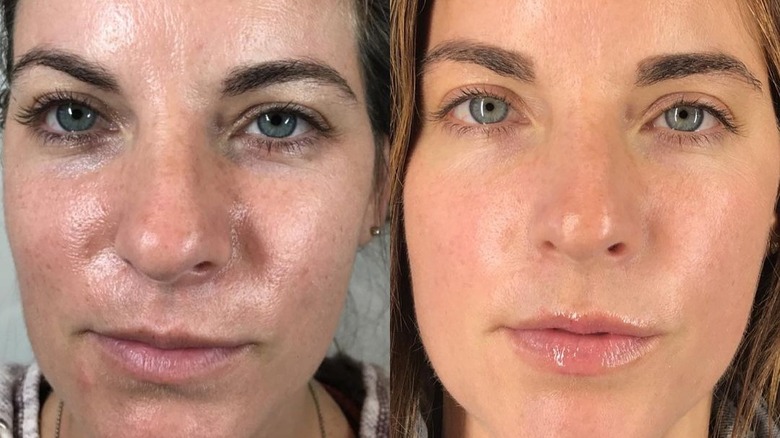Moxi Laser Treatment Is The Latest Innovation To Revitalize Your Skin
Have you ever considered trying a laser skin resurfacing treatment for acne, dark spots, or fine wrinkles? This cosmetic procedure uses fractional lasers to boost collagen production. Over time, it can minimize the signs of aging and stimulate tissue repair, leading to a more youthful complexion. In some cases, it may also even out the skin tone and prevent skin discoloration, according to clinical research published in the journal Menopause Review.
One of the latest innovations in this area is Moxi, a gentle laser resurfacing treatment that revitalizes the skin. Maryam Zamani, an oculoplastic surgeon based in London, recommends it to younger patients with enlarged pores, fine lines, or sun-damaged skin. The procedure is less invasive, therefore requiring less downtime than other laser treatments.
Moxi may not work for everyone, but it might be exactly what you need to achieve glowing skin. Plus, the results are visible in less than five days and can last for months, notes Dr. Zamani.
Moxi is a new-generation laser treatment for all skin tones
Sciton, the company that patented Moxi, says this new technology can dramatically improve skin tone and texture after just three to four treatments. A typical session takes 15 to 90 minutes and requires up to eight hours of downtime. Moreover, it can be combined with BroadBand Light (BBL) laser treatments or other procedures for even better results. The question is, can you trust these claims?
Faith Xue, Bustle's Executive Beauty Director, decided to try out the Moxi laser treatment after hearing about its benefits. As she explains in her review, Moxi is one of the few lasers that work for all skin tones without causing scarring. First, the dermatologist applied numbing cream to her skin. After that, she gently passed the laser over the skin areas where Xue had dark spots. At the end of the session, she placed a cool compress on Xue's face and then applied a soothing cream along with mineral sunscreen.
"The whole process took about an hour and a half out of my day, and though my skin felt a little warm and sensitive when I left the clinic, I didn't look excessively red," said Xue. She also experienced minor skin flaking over the next few days, but the side effects were negligible. Four weeks later, she noticed significant improvements in her skin color and texture — and some of the dark spots on her face were gone completely.
Should you try the Moxi laser treatment?
Laser resurfacing works by creating micro-tears in the skin. This process stimulates the formation of new skin cells, reducing wrinkles, fine lines, scars, hyperpigmentation, and scars, explains a 2010 review published in the Journal of Clinical and Aesthetic Dermatology. Moxi uses the same concept as traditional laser treatments, but it's less invasive and delivers faster results, according to Sciton. Moreover, it can be used as a preventive treatment for all skin types.
Moxi is typically recommended for younger people, but it works for all ages. However, it's important to note that laser resurfacing may not be safe for pregnant or breastfeeding women, individuals with a history of keloid scars, or those with autoimmune diseases. Also, you should think twice about undergoing this treatment if you have a weak immune system or connective tissue disorders. Look for a different treatment option if you took isotretinoin (Accutane) over the last 12 months.
Apart from that, the Moxi laser treatment may not be suitable for people with severely sun-damaged skin and cannot erase deep wrinkles, notes RealSelf. Plus, patients with dark skin may need more sessions to see noticeable improvements. In some cases, the treatment can reactivate the herpes simplex virus (HSV) and cold sores, so it's not recommended for those who carry the virus. As far as pricing goes, you can expect to pay around $575 per session, depending on who performs the treatment, the problems you want to address, and other factors.

